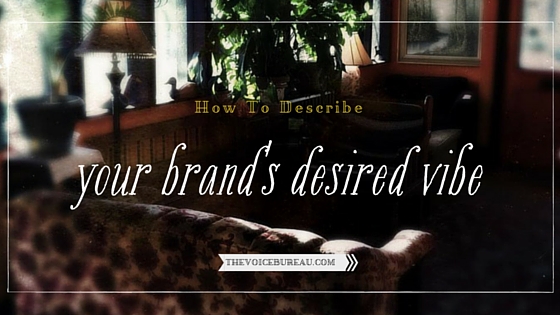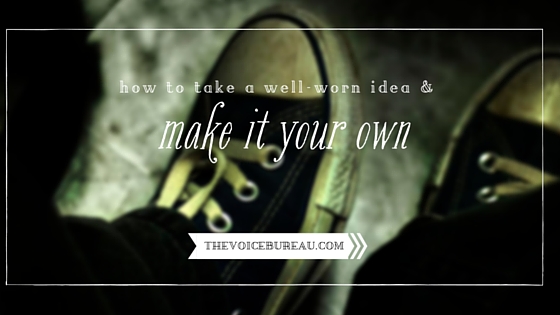When I listen to a client’s brand, even before we’ve put words on the page for it or before there’s a website I can look at, I’m listening for two things: voice and vibe.
Though similar in nature and certainly intertwined, they’re not exactly the same things.
I describe vibe as the energy of the abstract qualities that come through a brand in its suite of signals. Vibe shows up in the design choices: color, typography, graphic style, layout. Vibe comes through the content. Vibe is felt in a business’s relationship with its customers, its readers, its supporters.
But describing your own brand’s vibe, or desired vibe, can be slippery. If you have an existing brand, there might be a gap between what the vibe you want and the vibe you’ve got.
You might have told a designer, “I want edgy, feminine, bohemian, and sacred,” and you might have gotten something else back — something that looked to you like ‘trendy, girly, and witchy.’ A different vibe. You might have sent a designer a pinboard full of colors, textures, and images, but what you got back wasn’t the composition you had in your mind’s eye. Therefore, the vibe was off.
Here are 3 exercises you can do to describe your existing brand’s vibe, or to describe your desired brand vibe if you’re in line for a redesign:
1. Focus on Colors. Where do the colors you love come from, in nature, history, design, art, or fashion? Are they linked to an era, like these Art Nouveau-era colors, or this Midcentury Modern palette? Are they inspired by fashion? Maybe built around a hex code resembling Chanel’s cult-classic nail polish Vamp? Did you derive your colors from a photo you took at a favorite spot outdoors, like, say, Washington State’s Cape Flattery? And what do your color choices SAY about what matters to you and your brand?
2. Filter Your Copy. Reread the most important pages of your site. Read your home page, about page, and service/sales page. Read them sentence by sentence and keep a pad of paper next to you as you read. As you read, write down the ONE most important word in each sentence — according to YOU. When you’re done, review your (long) list. Look for patterns in the words. Are there themes and motifs emerging? Are you noticing something about your brand or business you’ve never seen before in quite the same way?
3. Find Your Right People. Think of your 5 favorite clients so far. Write their names down. For each client, think of 5 words to describe them and write those down. Look for patterns in your list of 25. Any recurring words? Synonyms (different words that mean the same thing)? Really interesting juxtapositions that give your brand texture?
It’s a quick trip from vibe to themes and from themes to content. There’s a bit of a hop, skip, and a jump in there, but we know how to get you from Point A to Point B. Inside our new online course, Run Your Business Like a Magazine, we’ll unpack the magic of getting from vibe to voice on the page — in the form of a content strategy you can be proud of that meets your Right Person’s needs and inspires you to keep creating and publishing.
All the details on Run Your Business Like a Magazine are right here.
In the comments, we’d love to hear you:
Describe your own brand’s vibe, or desired vibe. We’d love to hear the words you’d choose, especially if you’ve done one or more of the exercises described here!
{ 2 comments }





 Hello, you.
Hello, you.